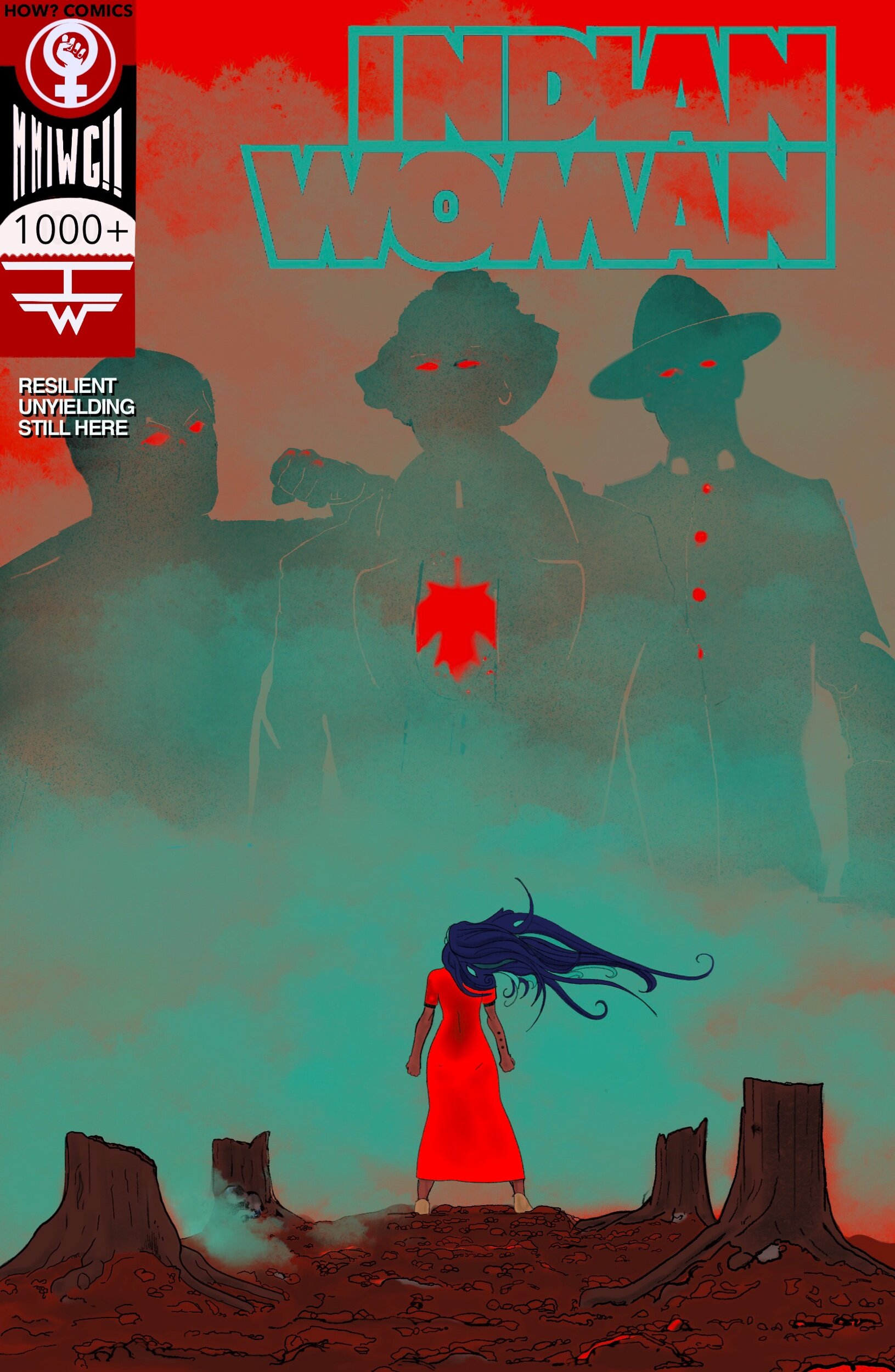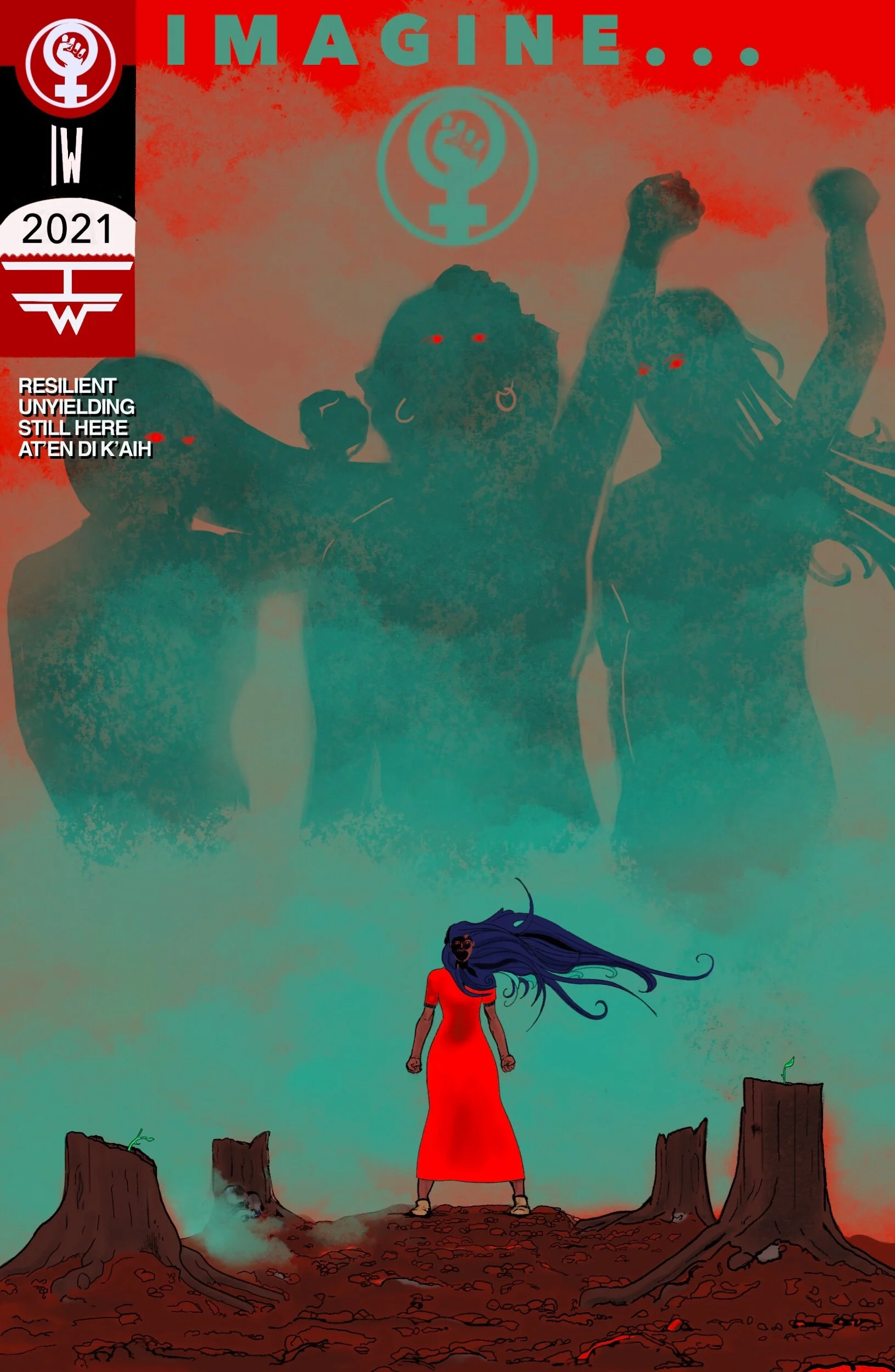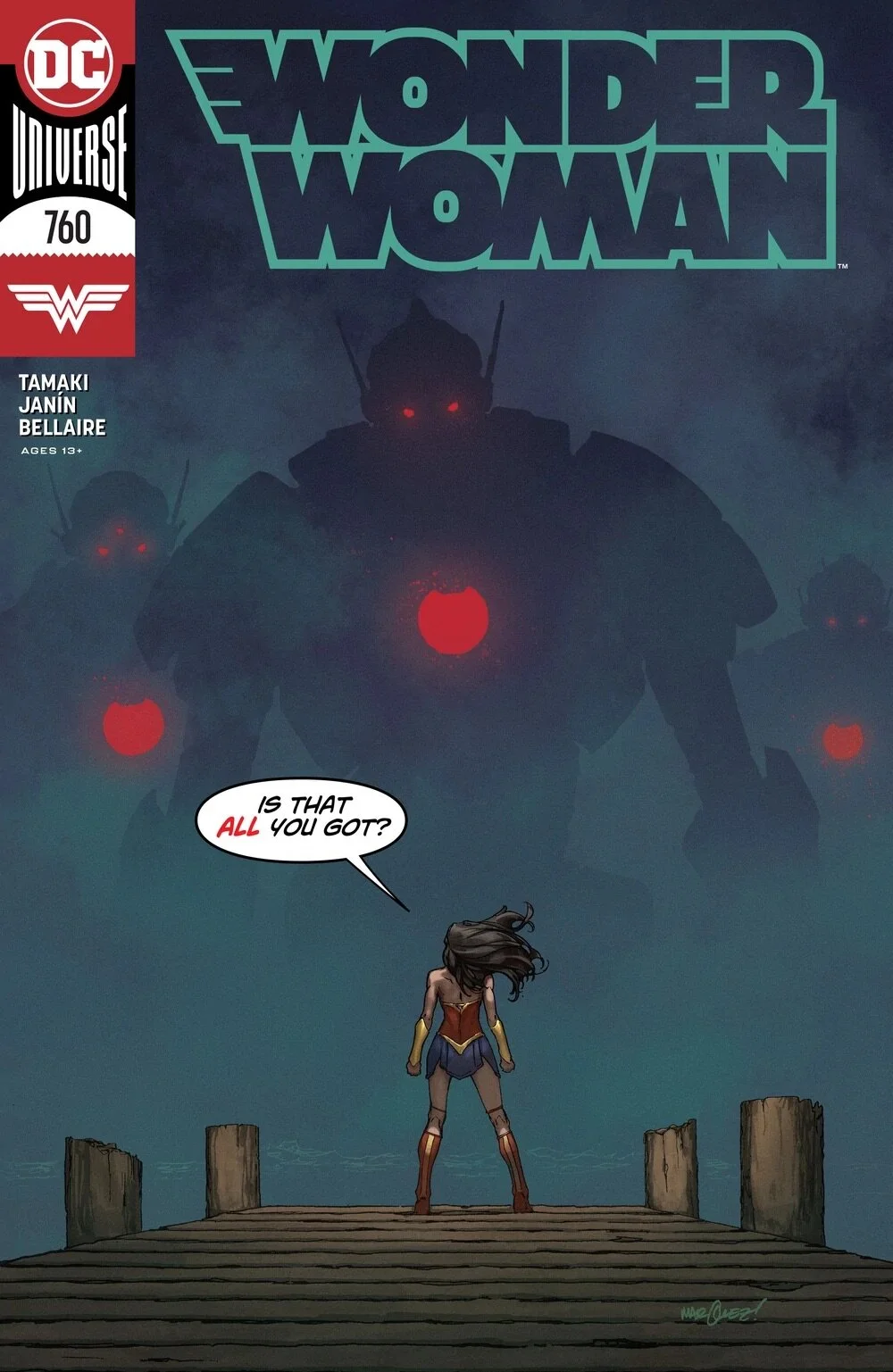In the Imagine… cover I do away with some of the words. The woman is now facing us with her collective spiritual and ancestral sisterhood standing behind her. Growing out of the cut stumps is new life representing the idea that we can cultivate something new, we can cultivate a new paradigm where violence is not acceptable as a way to control and resolve issues.
At’en di k’aih is a Dalkelh phrase that means in the autumn when the leaves are burning and it represents a time to remember and thank our ancestors. It has a quality of endings and new beginnings and is seated in the Tl’azt’en way of appreciating those who came before us, remembering all the actions, suffering, joy, and lives of our ancestors endured in order that we are here today. Much of what we have and who we are stems from these ancestors and one day, we will be the ancestors of someone in the future. Our responsibilities now include looking to the effect we have on those who come after us, our future generations. Let us do better.
Let us do better.
Title: Indian Woman
There is an incredible complexity to the violence and misogyny facing Indigenous women in this country.
Accented by government, the cultural misogynistic attitudes of the past and present have set up a present day for Indigenous women that is complicated and scary. One of the greatest impacts of the Indian Act and colonization is the violence a modern-day Indigenous woman must navigate.
Violence does not solely reside in the realms of racism and misogyny, but the increase of violence against women because of these ideologies cannot be denied.
The depth of this problem is profound and far reaching. How do we stop the violence that permeates our world?
Please remember these women.
Inspiration cover
DC Comics Wonder Woman Vol 1 #760
October 2020
Cover Artist: David Marquez
Writers: Mariko Tamaki
Pencilers: Mikel Janin
Inkers: Mikel Janin
Colourists: Jordie Bellaire
Letterers: Pat Brosseau
Editors: Paul Kaminski, Brittany Holzherr, Jamie S. Rich



